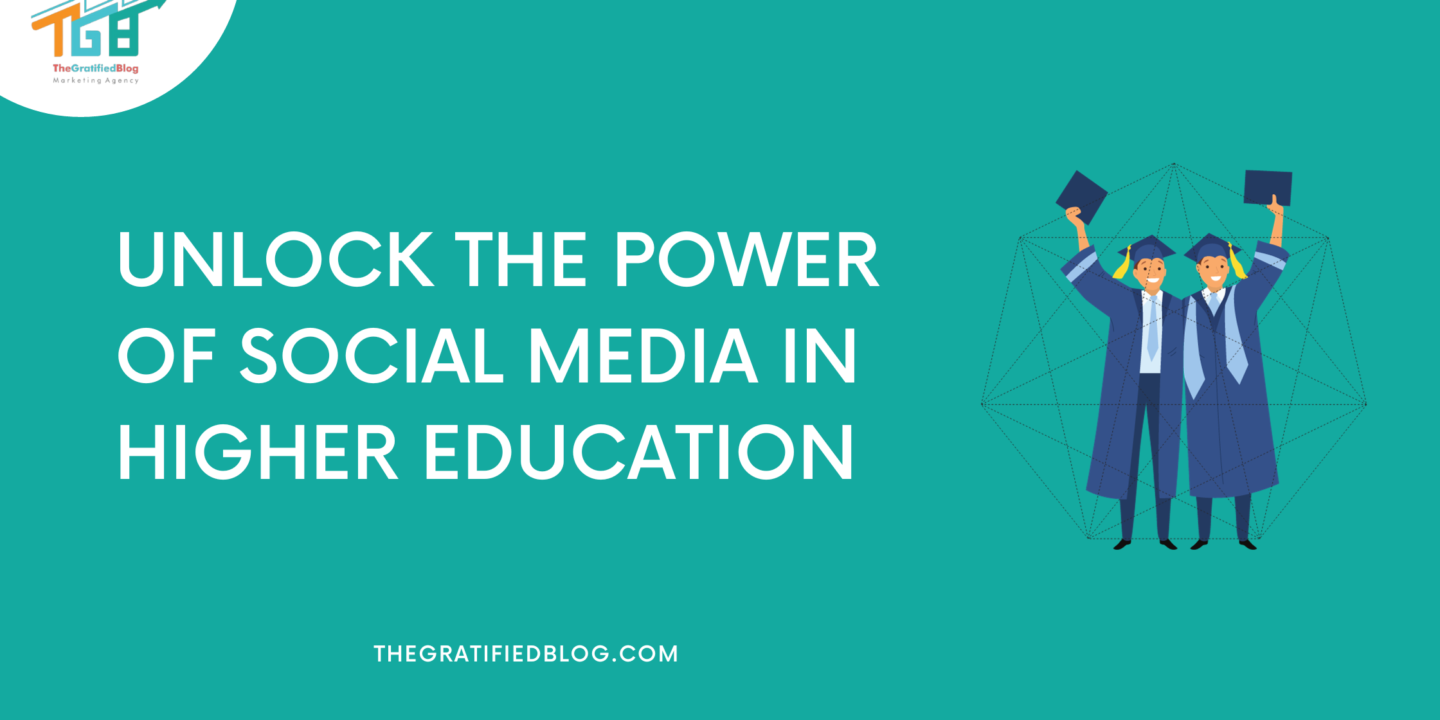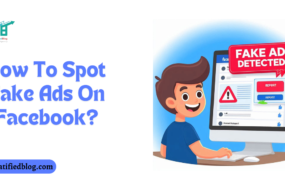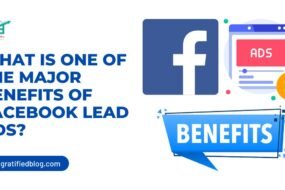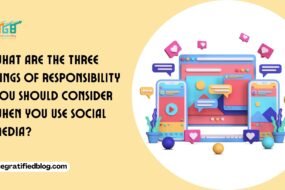
In the age of digital transformation, the landscape of higher education is undergoing a profound shift. At the heart of this transformation lies a powerful tool that has revolutionized how we connect, communicate, and learn: social media. Integrating “social media in higher education” is not merely a trend but a dynamic force reshaping the academic experience.
In this blog, we’ll delve into the following key aspects: “Understanding Social Media’s Role in Higher Education,” “The Significance of Social Media in Higher Education,” “Exploring the Pros and Cons of Social Media Integration in Higher Education,” “Effective Strategies for Leveraging Social Media in Higher Education,” “Frequently Asked Questions,” and “Summing It Up.”
So, let’s get started by understanding the basics, i.e.,
What Is Social Media In Higher Education?
Social media in higher education refers to using various digital platforms and online tools, such as Facebook, Twitter, Instagram, LinkedIn, and others, to enhance the teaching, learning, communication, and overall educational experience within colleges and universities.
It involves creating and maintaining online communities, sharing information, facilitating discussions, and engaging with students, educators, and institutions in a digital space.
Social media offers an alternative and complementary approach to traditional classroom methods, allowing for increased connectivity and collaboration among all stakeholders in the higher education ecosystem.
Why Is Social Media In Higher Education Important?
- Enhanced Engagement and Communication: Social media provides a dynamic and interactive communication platform for students and educators. It enables real-time discussions, instant feedback, and open dialogue, fostering a more engaging learning environment. Educators can share updates, resources, and essential announcements efficiently, while students can ask questions, collaborate on projects, and express their ideas more freely. This heightened level of engagement promotes active learning and strengthens the student-instructor relationship.
- Global Reach and Diversity: Social media transcends geographical boundaries, making it possible for higher education institutions to connect with a worldwide audience. It attracts a diverse student body and encourages international collaborations, promoting cross-cultural understanding and a richer academic experience. This global reach also benefits educators, who can access a broader knowledge base and connect with experts from various parts of the world.
- Skill Development and Digital Literacy: Social media platforms in higher education help students develop essential digital literacy skills. They learn how to navigate various digital tools, critically assess online information, and present themselves professionally in the digital sphere. These skills are valuable for academic success and future career opportunities, where digital proficiency is increasingly in demand.
Advantages And Disadvantages Of Social Media In Higher Education
Advantages Of Social Media In Higher Education
- Enhanced Communication: Social media platforms provide a direct channel for students, faculty, and institutions to communicate immediately and in real time. This fosters a more connected learning environment, allowing rapid information sharing, feedback exchange, and seamless collaboration. It breaks down traditional communication barriers, making it easier for students to reach out to professors and peers, enhancing their educational experience.
- Resource Sharing: Social media facilitates the easy sharing of educational materials, research findings, articles, and relevant resources. This culture of knowledge sharing promotes access to a wealth of information and encourages a collaborative approach to learning. Students and educators can contribute to a collective pool of resources, making high-quality materials readily available to the entire academic community.
- Active Learning: Social media platforms can be harnessed to create interactive learning experiences. Through features like polls, quizzes, and discussions, students are encouraged to actively participate, think critically, and engage with course content. This interactive approach to learning makes education more engaging and improves the retention of information.
- Global Reach: Social media’s global reach allows higher education institutions to connect with a diverse and international student body. It attracts students worldwide, fostering a culturally rich and varied learning environment. Exposure to different perspectives and experiences prepares students for a globalized job market where cross-cultural competence is highly valued.
- Building an Online Community: Social media platforms serve as virtual meeting places, helping students build community, even in online courses. This feeling of belonging and connection can be particularly vital for remote learners, increasing student retention and overall satisfaction with their educational experience. It nurtures relationships, encourages peer support, and enhances the feeling of being part of a larger academic community.
- Quick Dissemination of Information: Social media’s speed and efficiency make it a valuable tool for institutions to rapidly share updates, announcements, and essential information with their students. This ensures timely communication and keeps students well-informed about important events, deadlines, and news related to their education. The real-time nature of social media ensures that information reaches its intended audience promptly, reducing the likelihood of missed communications.
Disadvantages Of Social Media In Higher Education
- Distraction: Social media, while a valuable educational tool, can also be a source of distraction. Students may find it tempting to engage in unrelated activities during classes or study time, such as scrolling through social feeds or responding to messages. This diversion from educational tasks can significantly impact their focus and productivity, potentially hindering their academic progress.
- Privacy Concerns: Privacy concerns may arise when students share personal information and academic work on social media platforms. Oversharing or inadvertent data disclosure can expose students to potential risks, including identity theft, online harassment, or stalking. Students must be cautious and mindful of their online presence to protect their privacy.
- Information Overload: The vast amount of information available on social media can be overwhelming for students. They may struggle to filter out irrelevant content, leading to cognitive overload and challenges retaining important information. Effective information management and critical thinking skills are essential for successfully navigating this wealth of data.
- Misinformation and Disinformation: Social media is not immune to the spread of false or misleading information. Students encounter inaccurate or biased content, which can negatively impact the quality of their education and research. Critical media literacy skills are crucial for students to discern reliable sources from misinformation, ensuring they receive accurate information.
- Unequal Access: Not all students have equal access to technology or reliable internet connections. This digital divide can create disparities in access to educational resources and opportunities. Students with limited access to online content and tools may need help keeping up with their peers, potentially disadvantaging their academic pursuits. Efforts to bridge this digital gap are necessary for promoting educational equity.
Tips For Using Social Media In Higher Education
Set Clear Guidelines
Establishing clear guidelines is paramount when integrating social media into the educational context. These guidelines should define the acceptable use of social media, covering topics such as behavior, privacy, and etiquette.
For example, rules could be put in place to discourage cyberbullying, hate speech, or the sharing of sensitive personal information. Privacy settings should be emphasized to help students protect their online identities. Etiquette guidelines promote respectful and constructive communication within the online learning community.
By setting these clear expectations, institutions create a safer, more respectful online environment that encourages positive engagement and discourages negative behaviors.
Training For Educators
Providing training for educators is crucial in ensuring the effective use of social media as a teaching tool. Many educators are experts in their fields but may need more technical know-how to navigate social media platforms confidently.
Training programs can equip them with the skills to create and manage online content, facilitate discussions, and interact with students in a digital space. This training can also help educators understand the potential of social media in enhancing the learning experience and ensuring that they make the best use of these tools in their teaching strategies.
By investing in educator training, institutions empower their faculty to leverage social media effectively, enriching the educational experience for educators and students.
Promote Digital Literacy
Proficiency in digital literacy is an essential skill in the age of social media, and it’s necessary to educate students on its responsible use. This includes teaching students how to discern reliable sources of information, recognize and avoid online threats, and understand the consequences of their online actions.
By promoting digital literacy, students become better equipped to navigate the digital landscape, critically evaluate information, and protect their privacy. This education also helps them develop the skills to participate in meaningful and respectful online discussions, fostering a positive and constructive digital learning environment.
Select The Right Platforms
Selecting the appropriate social media platforms is crucial to align with the educational goals and objectives of your institution or courses. Not all platforms are equally suitable for all types of content and interactions. For instance, platforms like Twitter might be great for brief updates and discussions. In contrast, platforms like YouTube are more suitable for sharing video lectures or demonstrations and considering the target audience, the type of content you want to share, and the platform’s features and functionality. Selecting the right platforms ensures that your social media efforts are aligned with your educational goals and reach the intended audience effectively.
Create Safe Spaces
Fostering a safe online environment is essential for productive and respectful discussions. Creating safe spaces means actively discouraging harassment, discrimination, and offensive behavior.
This can be achieved by enforcing strict policies against bullying and hate speech and promptly addressing incidents. Encourage open and respectful communication and ensure that students and educators feel comfortable expressing their thoughts and opinions without the fear of retaliation or judgment.
By establishing safe spaces on social media, you facilitate a more inclusive and productive online learning community.
Regular Monitoring
Monitoring social media interactions is crucial to maintaining a focused and productive educational environment. It helps ensure that discussions and content align with educational goals and objectives.
Monitoring enables you to promptly identify and address any distractions or conflicts, maintaining a positive and constructive online learning experience. Automated tools and human moderators can be employed to help with this ongoing monitoring effort.
Some of the monitoring tools are:
- Google Alerts: You can configure Google Alerts to monitor mentions of specific keywords or topics across the internet, allowing educational institutions to stay informed about discussions related to their courses, faculty, or subjects.
- Hootsuite: Hootsuite serves as a social media management platform that enables the scheduling of posts and real-time monitoring of multiple social media accounts. It helps institutions keep track of engagement, brand mentions, and trending topics.
- Social Media Analytics Tools: Platforms like Facebook, Twitter, and LinkedIn offer built-in analytics tools that provide insights into user engagement, audience demographics, and the performance of posts, aiding institutions in assessing the impact of their social media efforts.
- Buffer: Buffer is a tool for scheduling and analyzing social media posts. It helps educational institutions plan and track their social media content and engagement.
- Social Mention: Social Mention provides real-time search and analysis of social media content. Platform. It provides insights into what people say about your institution across various social platforms.
- Brandwatch: Brandwatch is a more advanced social listening tool that offers in-depth analytics, sentiment analysis, and competitor tracking for a comprehensive understanding of your online presence.
- Talkwalker: Talkwalker is a tool for social media analytics and monitoring, aiding in tracking brand mentions and monitoring. Trends, and assess the impact of your social media efforts.
Evaluate And Adapt
Regularly assessing the effectiveness of social media usage in higher education is essential to ensure that your approach remains relevant and valuable. Collect feedback from students and educators and use this information to make necessary adjustments. Adapt to changes in technology and student preferences to keep the educational experience current. Be open to innovation and improvements, and use data and feedback to guide decisions on better integrating social media into your institution’s educational framework. Regular evaluation and adaptation will help you stay ahead and maximize the benefits of social media in higher education.
FAQs
Q1. What is social media in higher education?
A. Social media in higher education uses digital platforms like Facebook, Twitter, Instagram, and LinkedIn to facilitate communication, collaboration, and learning within the academic environment and integrate these platforms into teaching, learning, research, and administrative processes to enhance the educational experience.
Q2. How does social media benefit higher education?
A. Social media enhances higher education through improved communication, resource sharing, active learning, global reach, online community building, and quick information dissemination. It fosters engagement, collaboration, and access to diverse resources and perspectives.
Q3. What are the potential disadvantages of using social media in higher education?
A. Some disadvantages of using social media in higher education include the potential for distraction, privacy concerns, information overload, the spread of misinformation and disinformation, and unequal access to technology. These issues can impact students’ focus, privacy, information retention, and educational equity.
Conclusion
Having grasped the potential advantages of integrating social media in higher education, consider harnessing this powerful tool for your educational institution starting today. Doing so allows you to explore the positive outcomes it can bring to your academic community.
If you still have any questions related to the blog, then feel free to leave them in the comments section. Feel free to ask any questions; we’ll gladly provide answers.
Thanks for reading 🙂








No Comments